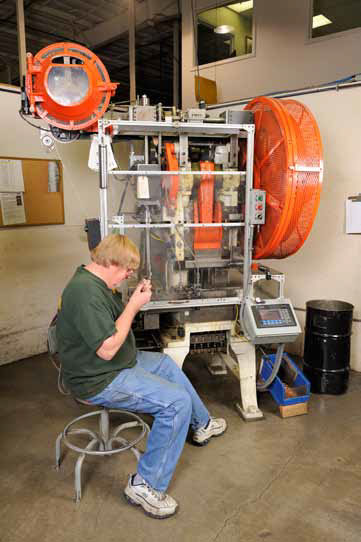How to Ensure the Quality of PT 141 When Buying in South Africa
With the growing interest in PT 141 for sexual health, it’s important to ensure you’re purchasing a high-quality product, especially when buying from South African sellers. PT 141 (Bremelanotide) is a peptide used to treat sexual dysfunction in both men and women, but like many peptides, the market can be flooded with low-quality or counterfeit products. In this guide, we will provide practical tips to help you verify the purity and quality of PT 141 when purchasing from South African vendors like https://leolab.co.za/peptides/pt-141/.
1. Buy from Reputable Sellers
The first step in ensuring the quality of PT 141 is choosing a trustworthy supplier. Look for companies with a strong track record and positive customer reviews. Be wary of websites that offer overly discounted prices or lack essential information about their products and testing procedures.
Some ways to verify the legitimacy of a seller include:
- Checking their online presence, including reviews on third-party websites.
- Ensuring the company is transparent about their testing and manufacturing practices.
- Confirming that the seller operates within South African regulations regarding peptide sales.
2. Ask for Third-Party Lab Testing
High-quality PT 141 should always come with proof of third-party lab testing. These independent tests verify the product's purity and composition, ensuring that it meets industry standards. When purchasing PT 141, ask the seller for a Certificate of Analysis (COA) from a third-party laboratory.
A genuine COA should provide:
- The batch number of the product.
- Details on the percentage of purity (ideally above 98%).
- Information on any potential contaminants or impurities.
Avoid sellers who cannot provide this documentation, as they may be selling substandard or impure products.
3. Verify the Purity
Purity is one of the most critical factors when buying peptides like PT 141. A high-quality product should be at least 98% pure, as lower purity levels can indicate the presence of harmful contaminants or fillers. Before purchasing, verify the purity percentage through the provided lab results.
In addition, be aware of any inconsistencies in the peptide's appearance, as PT 141 should be in a freeze-dried (lyophilized) powder form, usually white or off-white.
4. Check Packaging and Storage Conditions
Proper packaging and storage are essential to maintaining the integrity of PT 141. Since peptides are sensitive to light, heat, and moisture, the product should come in airtight, UV-protected containers. Additionally, check if the seller provides specific storage instructions, such as refrigeration after reconstitution.
Here’s what to look for:
- Vacuum-sealed or air-tight packaging.
- Clear storage instructions for temperature-sensitive conditions.
- Information on the product's expiration date.
5. Avoid Sellers Offering Unrealistically Low Prices
While it’s always tempting to go for the cheapest option, extremely low prices can be a red flag for poor-quality or counterfeit products. PT 141 is a high-demand peptide, and its manufacturing requires precision and high-quality raw materials. Sellers offering PT 141 at significantly lower prices may be cutting corners in production or offering counterfeit products.
6. Communicate with Customer Support
A reliable seller should have an accessible and knowledgeable customer service team to answer your questions. Before purchasing PT 141, reach out to the vendor with any questions regarding the product’s origin, testing procedures, or storage requirements. The responsiveness and expertise of the customer support team can often be an indicator of the seller's overall reliability.
7. Verify Peptide Reconstitution Information
PT 141, like most peptides, comes in a powdered form and must be reconstituted with bacteriostatic water. Legitimate sellers will provide clear instructions on how to reconstitute and use the peptide safely. If this information is absent or vague, it may indicate a lower-quality product or a seller who is not well-versed in peptide handling.
8. Look for Local South African Reviews
When buying from South African suppliers, it’s a good idea to seek reviews from local customers. South African forums, health websites, or social media groups focused on peptide usage can provide valuable insights into the reliability of specific sellers and the quality of the products they offer.
Conclusion
Purchasing PT 141 in South Africa can be a smooth and reliable process as long as you take the necessary steps to verify the product's quality and the seller's credibility. Prioritize reputable suppliers, ask for third-party lab testing, and ensure proper packaging and storage conditions. By following these tips, you can safeguard your health and ensure you're receiving a high-quality, effective product.

PRODUCING THE BULLET JACKET
All our bullet jackets are made from gilding metal, a copper alloy composed of 95% copper and 5% zinc. In order to match our different bullet requirements and meet stringent quality objectives, we buy nineteen different strip sizes of gilding metal and require three times more dimensional and quality control than is considered standard in the copper manufacturing industry. In fact, Olin Brasshas a special alloy exclusive to Sierra Bullets. This enables us to build extremely high uniformity into every one of our finished bullets.
The bullet begins to take shape during the manufacturing process when the jacket material is first blanked and then brought through a series of drawing processes. Special tooling made in our own tool and die shop ensures that the jacket is drawn evenly and that uniform wall thickness is maintained for accuracy. Jackets which have been drawn to the proper wall construction are then trimmed to a length with a tolerance of +/- 0.001.” This ensures consistent weight and proper forming when the bullet is assembled.
After each step, the bullet jackets are washed and rinsed using a special cleaning process developed by our experienced personnel. During each phase of production, roving quality control inspectors check specifications to ensure that the only part to move on is a perfect one. Reports on the quality of parts being manufactured are maintained in every department and are periodically reviewed by shift supervisors.
